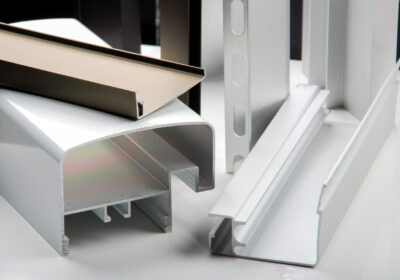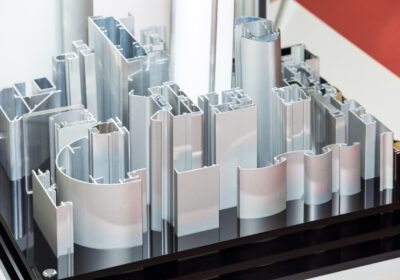Every great design starts with a very simple but highly important question: what material shall I use?
Material selection is the point where performance, cost, and innovation come together, especially in manufacturing and engineering. It’s not just about strength or weight; it’s about how a material acts from fabrication to finishing and into real-world use.
At Can Art Aluminum Extrusion, we understand very well that the right material choice can define a project’s success, especially with aluminum alloys. Among the many available, the 6000 series aluminum alloys have emerged as a designer’s favorite, offering an unbeatable blend of strength, workability, and corrosion resistance.
So, let’s take a deep dive into how to make the right material selection, and why 6000 series aluminum might just be your perfect match.
Step 1: Understanding the Material Selection Process
Choosing the right material isn’t guesswork; it’s an engineering decision based on a few key considerations:
- Mechanical Requirements: How much load or stress will the part endure?
- Environmental Conditions: Will it face corrosion, UV exposure, or moisture?
- Fabrication Methods: Will it be extruded, machined, welded, or formed?
- Surface Finishing Needs: Does it need anodizing, powder coating, or polishing?
- Cost and Availability: Can the chosen alloy be sourced easily and economically?
When you consider materials through these different lenses, you can start to understand why the use of aluminum alloys is so pervasive, and why the 6000 series often checks all the right boxes.
Step 2: Why Aluminum Alloys Lead in Modern Design
Aluminum has redefined the way industries think about metal. Lightweight yet strong, corrosion-resistant yet easy to work with , it’s a material that’s just as suitable for architectural facades as it is for electric vehicle frames.
Key Benefits:
- Exceptional strength-to-weight ratio
- Outstanding corrosion resistance
- High thermal and electrical conductivity
- Excellent machinability and extrudability
- Recyclability and sustainability
But the real power of aluminum lies in its alloying potential , where small additions of other elements (like magnesium and silicon) fine-tune its performance. That’s where the 6000 series comes in.
Step 3: Spotlight on 6000 Series Aluminum Alloys
The 6000 series aluminum alloys, such as 6061 and 6063, belong to the magnesium-silicon family. This combination produces magnesium silicide (Mg₂Si), which enables these alloys to be heat-treatable and adaptable to different tempers, such as T4, T5, and T6.
Key Properties of the 6000 Series:
- Good corrosion resistance – suitable for indoor and outdoor conditions
- High extrudability – great for complex shapes and tight tolerances
- Excellent weldability and machinability
- Balance between strength and formability
- Attractive surface finish after anodizing
To put it briefly, the 6000 series is the most versatile family for aluminum extrusion; it harmoniously balances aesthetic appeal with mechanical reliability.
Step 4: Comparing 6061 vs 6063 Aluminum Alloys
Within the 6000 series, 6061 and 6063 are the heavyweights. Which one is chosen depends on priorities in your design.
| Feature | 6061 Aluminum | 6063 Aluminum |
| Strength | Higher – for structural aluminum | Moderate – for architectural use |
| Extrudability | Good, but slightly lower | Excellent – ideal for intricate profiles |
| Surface Finish | Fair | Exceptional |
| Corrosion Resistance | Very good | Excellent |
| Applications | Frames, automotive, marine, machinery | Windows, doors, trims, decorative extrusions |
6061 Aluminum is your go-to for structural performance, while 6063 Aluminum is perfect for architectural elegance.
Pro Tip from Can Art Experts:
- When strength drives design, select 6061-T6.
- When aesthetics and precision are important, count on 6063-T5 or T6 for the finish and form you require.
Step 5: Understanding Aluminum Temper Designations
An alloy’s temper designation, such as T4, T5, or T6, indicates its heat treatment and mechanical condition , or in other words, how the alloy was processed to achieve a certain strength or flexibility.
- T4 – Solution heat-treated, naturally aged (more formable)
- T5 – Cooled from extrusion, then artificially aged (stabilized)
- T6 – Solution heat-treated, artificially aged (highest strength)
Choosing the right temper can make all the difference in how your material behaves during extrusion, welding, or finishing.
Step 6: Balancing Performance, Cost, and Manufacturability
Material selection is often a balancing act , and that’s where working with an experienced extruder like Can Art Aluminum Extrusion adds value.
Our engineers work with clients to assess:
- Performance goals: strength, corrosion resistance, thermal properties
- Processing capabilities: machining, joining, coating
- Aesthetic expectations: surface quality, anodizing response
The selected material is going to meet your requirements with precisely the right alloy and temper combination for your project.
Frequently Asked Questions About 6000 Series Aluminum
What is 6000 series aluminum used for?
It’s used for automotive parts, building systems, machinery, and structural parts where both strength and corrosion resistance are critical.
Is 6000 series aluminum strong?
Yes. Alloys of the type 6061-T6 have high tensile strength and stiffness, combined with lightness.
What is the difference between 6061 and 6063 aluminum?
6061 is stronger and is used in load-bearing applications; 6063 has superior finish and extrudability for decorative and architectural use.
Can you weld 6061 aluminum?
Absolutely, 6061 is weldable with the right filler and technique without sacrificing much in mechanical performance.
The Can Art Perspective
At Can Art Aluminum Extrusion, we believe material selection is a partnership , between design intent and metallurgical expertise.
Our team doesn’t just extrude aluminum; we help you select, engineer, and finish the alloy that makes your vision functional, efficient, and beautiful. From alloy selection and die design through to heat treatment, machining, and anodizing, our completely integrated process ensures each profile meets the highest standards of precision and performance.
Choosing the right material is more than a technical step; it’s a strategic design decision. The 6000 series alloys offer the perfect combination of form, function, and ease of fabrication when it comes to aluminum. Whether you’re designing for strength, aesthetics, or both, CanArt Aluminum Extrusion helps you make the right material choice every time.





